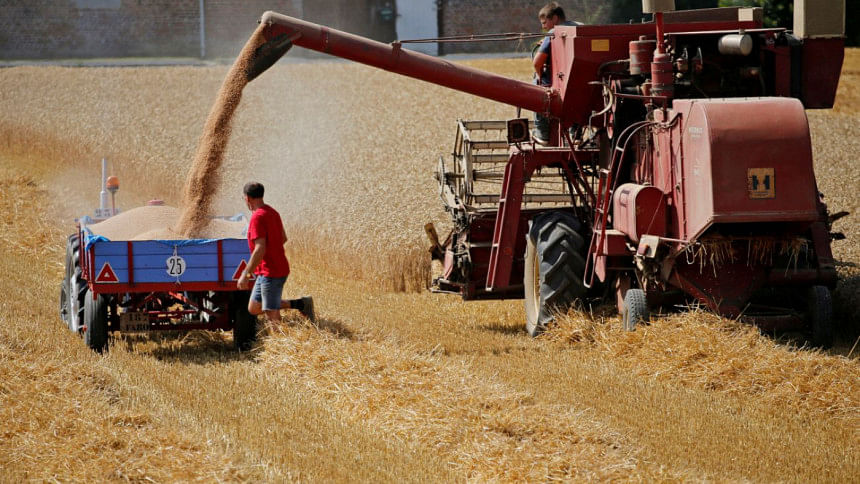Global wheat supply to crisis levels; big China stocks won't provide relief

A scorching hot, dry summer has ended five years of plenty in many wheat producing countries and drawn down the reserves of major exporters to their lowest level since 2007/08, when low grain stocks contributed to food riots across Africa and Asia.
Although global stocks are expected to hit an all-time high of 273 million tonnes at the start of the 2018/19 grain marketing season, according to U.S. Department of Agriculture estimates, the problem is nearly half of it is in China, which is not likely to release any onto global markets.
Experts predict that by the end of the season, the eight major exporters will be left with 20 percent of world stocks - just 26 days of cover - down from one-third a decade ago.
The USDA estimates that China, which consumes 16 percent of the world's wheat, will hold 46 percent of its stocks at the beginning of the season, which starts around now, and more than half by the end.
The 126.8 million tonnes China is estimated to hold is up 135 percent from 54 million five years earlier.
"People need to get rid of China stocks (in their calculations) ... if you do that, it's just exceptionally tight," said Dan Basse, president of AgResource Co in Chicago.
A repeat of the 2007/2008 crisis, which forced many countries to limit or ban exports, is unlikely in the absence of other drivers at the time, including $150-per-barrel crude oil .
The recent three-year high for wheat prices of $5.93 a bushel on the Chicago Board of Trade pales in comparison to the high of $13.34-1/2 a bushel in February 2008.
Importers in North Africa also appear to be better placed this time, with higher stocks of their own.
"It could have an impact on food inflation but in North African countries they have a good crop this year, fortunately, so their reliance is not as big as in the past years," said Abdolreza Abbassian, chief economist at the United Nations' Food and Agriculture Organisation (FAO).
"I don't think we want to be alarmist in terms of consequences," he added.
China started stockpiling wheat in 2006, setting a guaranteed floor price to ensure food security and stability.
At around $9.75 a bushel as of last week, Chinese prices are now so high that they cannot sell internationally without incurring a major loss.
Rabobank analyst Charles Clack said he expected China to continue to build stocks into next year but in the long-term it would look to reduce reserves by curbing domestic production, reducing imports or conducting internal auctions. "It will be a slow process ... I wouldn't expect exports to come flying out anytime soon," he said.
Government wheat reserves now total nearly 74 million tonnes, according to Shanghai JC Intelligence Co Ltd, most of it from 2014-2017 but a small amount as old as 2013.
Sylvia Shi, analyst at JC Intelligence, said China would continue to import wheat it cannot produce in sufficient volumes to help meet a growing appetite for high-protein varieties for products like bread and other baked products as diets become Westernised.
The wheat crop in several of the world's biggest exporters - Argentina, Australia, Canada, the European Union, Kazakhstan, Russia, Ukraine and the United States - has suffered this year.
A spring drought in the Black Sea bread baskets Russia and Ukraine was swiftly followed by a summer heatwave in the European Union. Dry weather now also threatens crops in another important exporter, Australia. Evidence of the serious harm done has grown as harvesting progresses.
Forecasts for the 28-member European Union have repeatedly been cut, with Germany set for its lowest grain harvest in 24 years after crops wilted under the highest summer temperatures since records began in 1881.
Russia's agriculture ministry held a meeting with grain traders on Friday to discuss export volumes.
The ministry denied export limits were discussed but traders, some of whom were at the meeting, said curbs might be imposed later in the season following complaints from domestic meat producers about the rising cost of animal feed.

 For all latest news, follow The Daily Star's Google News channel.
For all latest news, follow The Daily Star's Google News channel. 



Comments